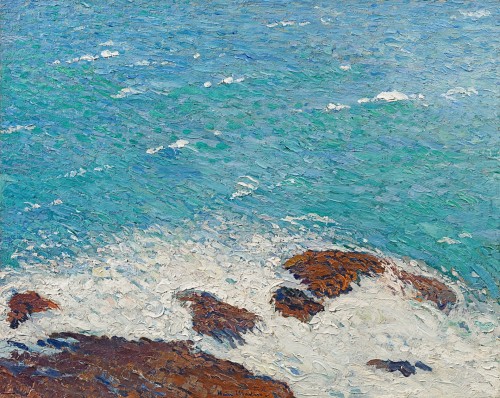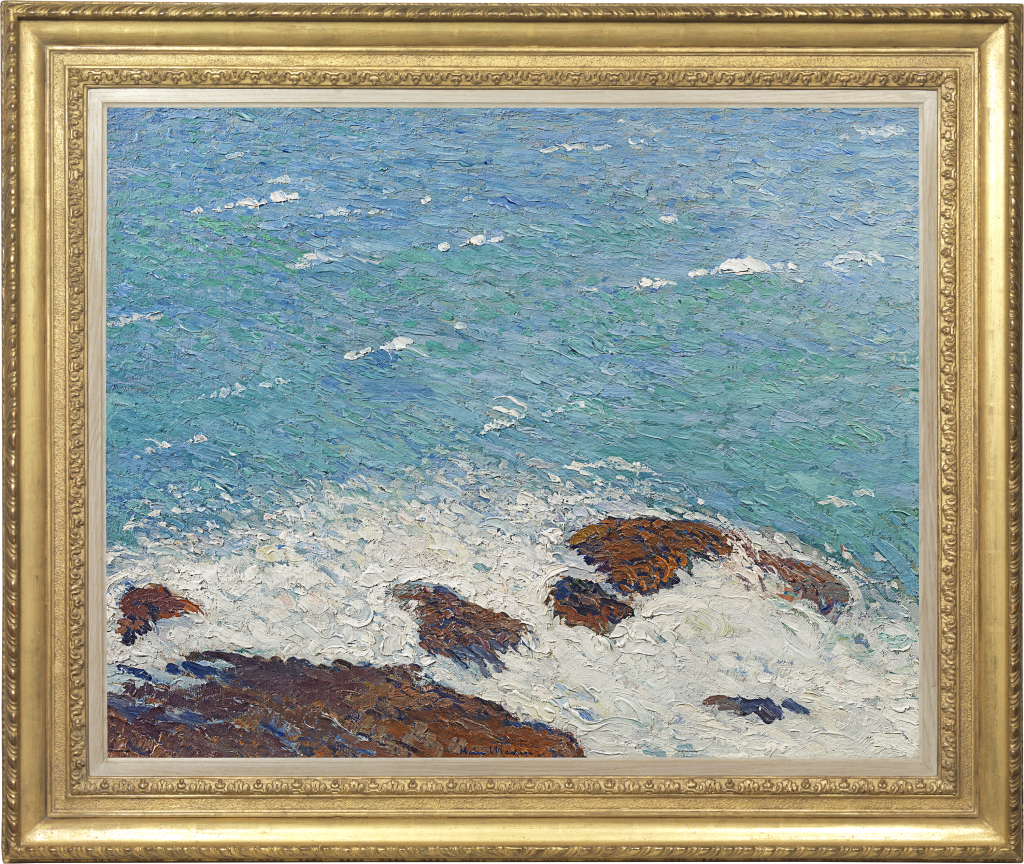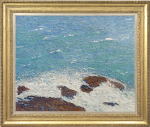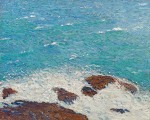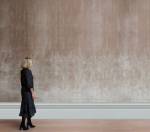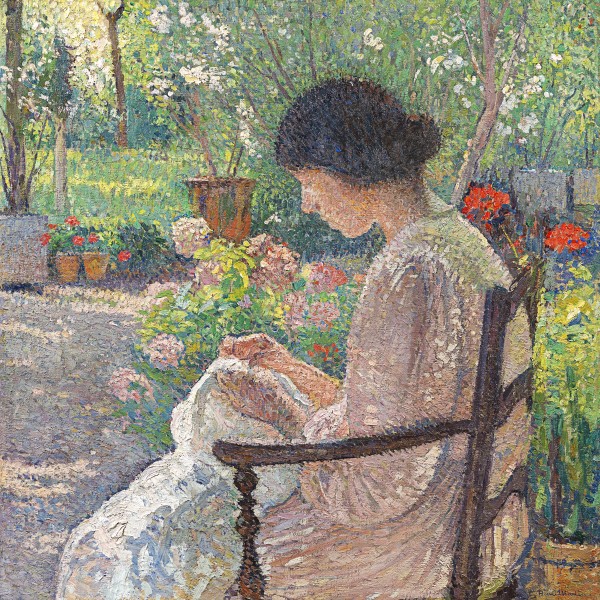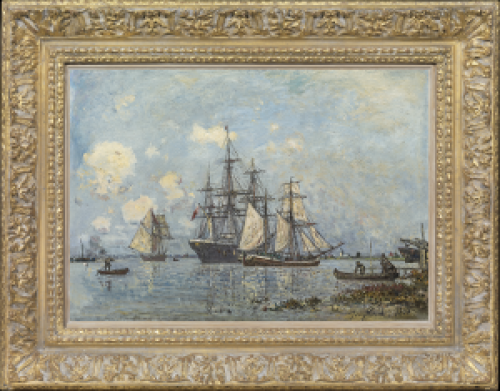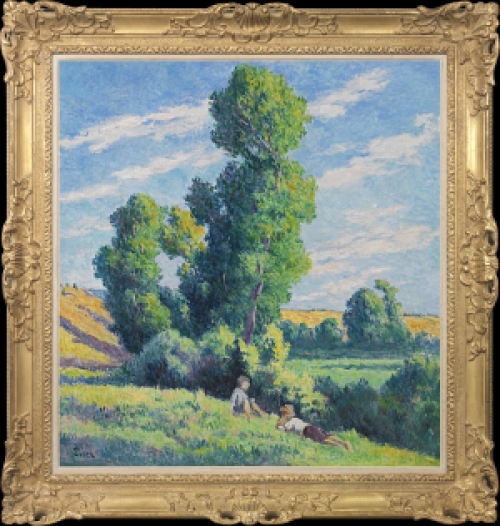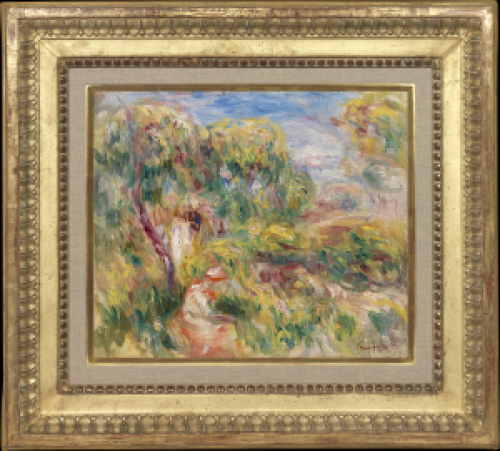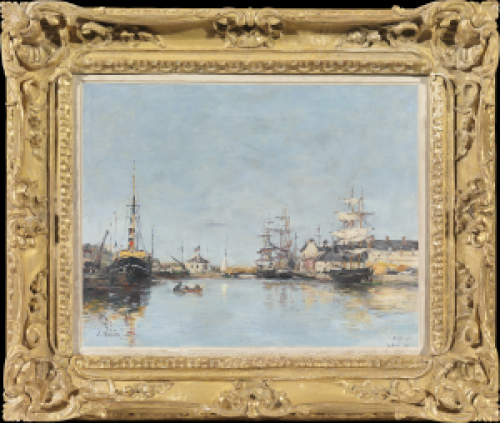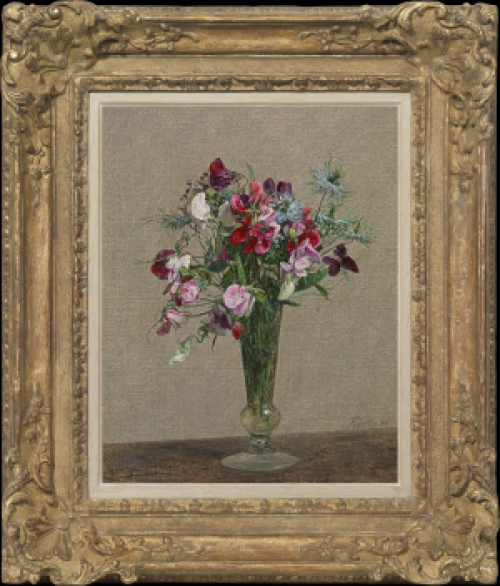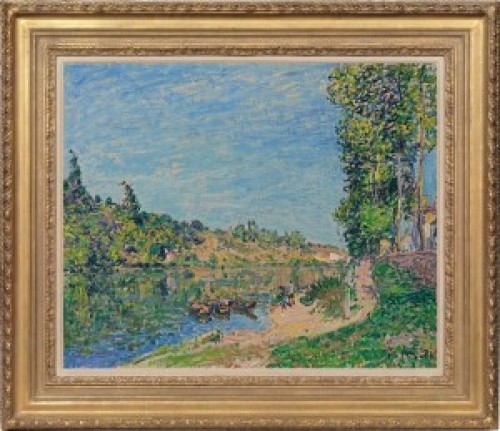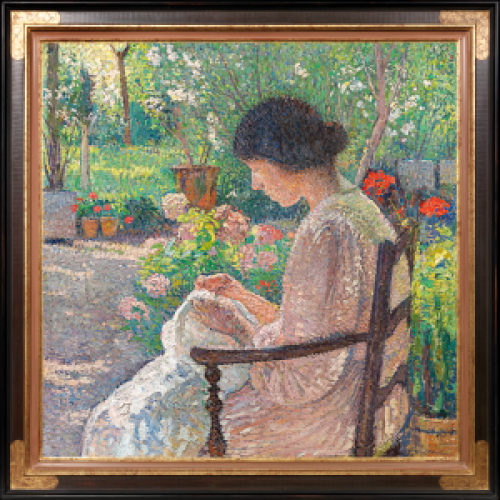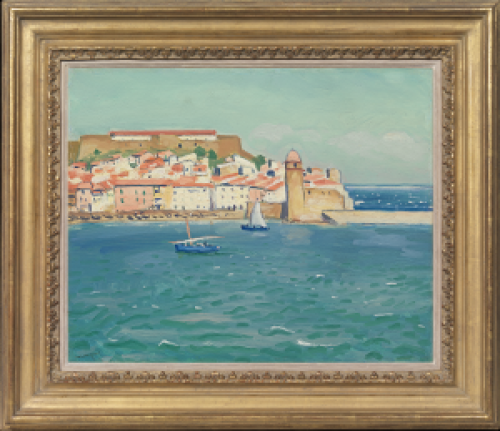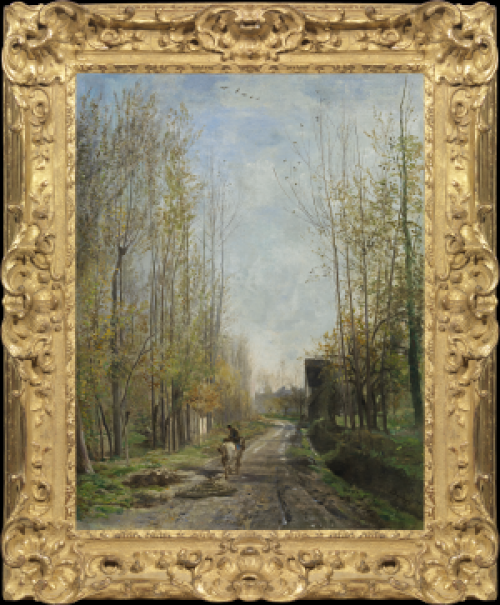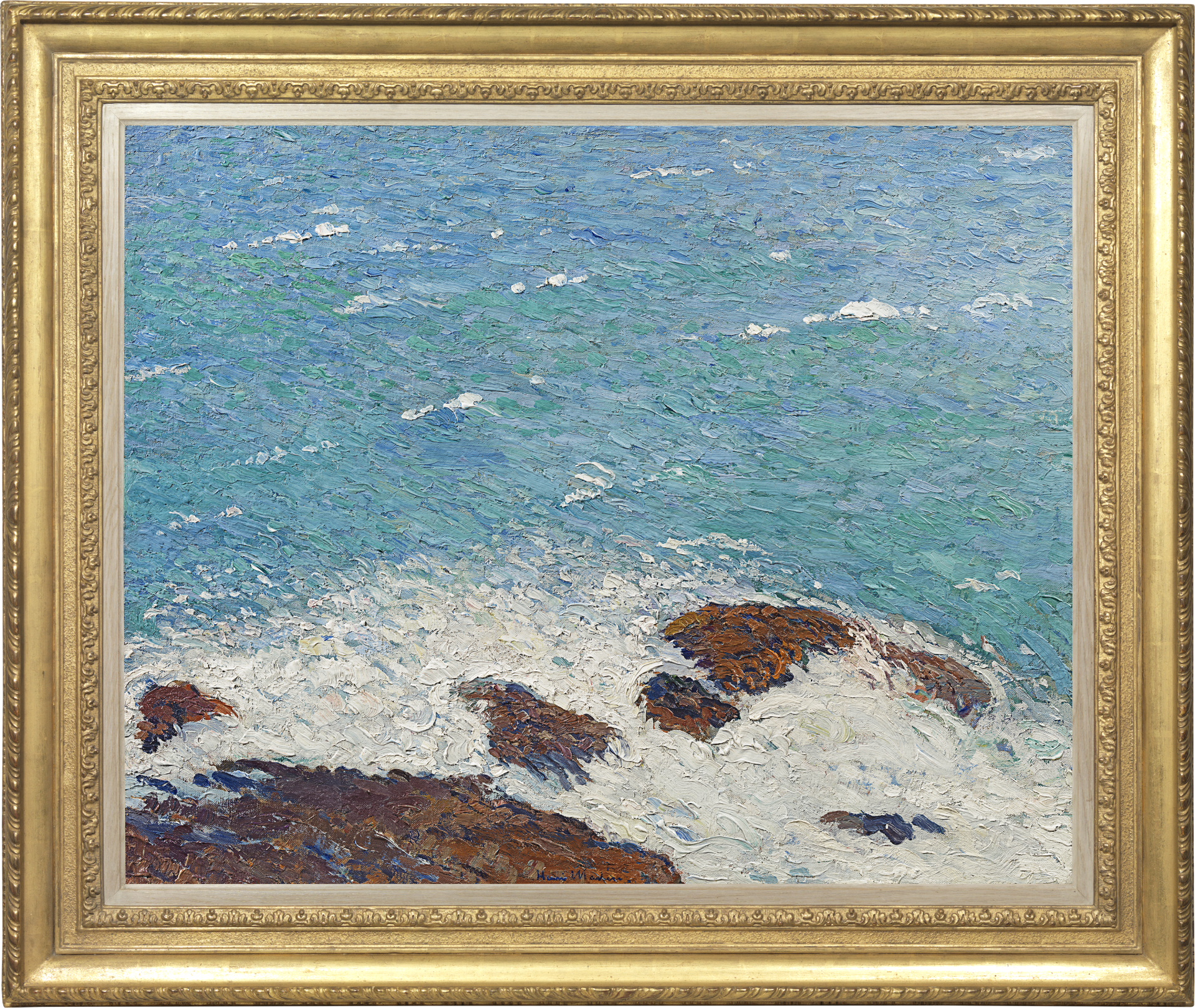HENRI MARTIN
Toulouse 1860 - 1943 Labastide-du-Vert
Ref: CC 116
Mer et rochers
Signed lower centre: Henri Martin
Oil on canvas: 25 ½ x 31 5/8 in / 64.8 x 80.3 cm
Frame size: 33 x 39 ½ in / 83.8 x 100.3 cm
In a Louis XV style gilded composition pastel frame
Painted circa 1926
Provenance:
Sotheby’s London, 30th March 1988, lot 134;
where acquired by a private collector, UK
To be included in the forthcoming catalogue raisonné of the work of Henri Martin being prepared by Marie-Anne Destrebecq-Martin
From 1900 Henri Martin lived at Marquayrol near Labastide-du-Vert in the Lot Valley, finding inspiration in its gentle green spring landscape and bright summers. In 1923 he bought another house at Collioure, a Catalan town south of Perpignan, fifteen miles from the French-Spanish border. His son, the painter Jac Martin-Ferrières, wrote that ‘It was placed on rocks facing the sea, and he made many studies from there’[1].
Martin knew the area well, as his friend Henri Marre spent part of every year in Collioure. The hot Mediterranean light, crisp shadows and monumental, golden architecture presented Martin with a new challenge. Throughout the 1920s and 30s he produced a series of views of Collioure which are among the most bold and joyful of his career.
Mer et rochers is unusual in Martin’s work in concentrating on a section of sea and rocky shore without any architectural elements or horizon. Martin painted en plein air and was extremely responsive to changes of light and atmosphere. The richly-impasted ocean, composed from dabs of green and blue with flecks of white, fills the upper two-thirds of the canvas. In the foreground, swirls and eddies of white, intermixed with touches of pink and cream, evoke waves breaking around jagged brown rocks, conjuring up the power of the sea and the complex flows and undercurrents of the Catalan shore. The restrained concentration on a few elements in nature has a hypnotic effect, harking back to the Symbolist elements of Martin’s work in the early part of his career. The painting can be compared to Soir à Collioure (before 1927; Musée des Beaux-Arts, Nantes)[2], a similar view of rocks and sea where the light has deepened further towards sunset.
Collioure, with its striking architecture and glorious setting, has been attracting artists since the 1880s. Paul Signac stayed there in 1887, Derain and Matisse painted groundbreaking Fauve works in 1905, and Picasso, Dufy and Chagall were all attracted to the town. For centuries Collioure was of strategic importance, squabbled over by the kingdoms of Aragon, Majorca, Spain and France, to which it was finally ceded in 1659. The Royal Castle, built in the thirteenth and fourteenth century by the Kings of Majorca, was reinforced to its present outline by Philip II of Spain in the sixteenth century. By the nineteenth century Collioure was a modest fishing port and a centre for anchovy salting and canning; its unspoiled beauty attracted increasing numbers of visitors as the twentieth century progressed.
HENRI MARTIN
Toulouse 1860 - 1943 Labastide-du-Vert
Henri Martin moved to Paris in 1879 from his home town of Toulouse. A scholarship enabled him to study in the studio of Jean-Paul Laurens and in 1883, at the age of twenty-three, he gained his first medal at the Paris Salon.
In 1885 Martin was awarded a scholarship by the Salon to study in Italy, a journey that was to have a profound effect upon his artistic development. Until this period he had favoured literary, historical and Biblical subjects painted in a precise, academic technique, but the Italian light and his study of masters such as Giotto and Masaccio gave him a new perspective.
Martin returned to Paris in 1889. Influenced by the Neo-Impressionists, Martin used the Divisionist technique to give his work an ethereal quality; he abandoned the academic style of his earlier works and in 1889 submitted a canvas to the Salon that was wholly Pointillist. During the next decade, impressed by the work of the Symbolists, Martin peopled his landscape with shimmering allegorical figures and floating muses. Puvis de Chavannes said of him: ‘Celui-ça sera mon héritier, il continuera’. However, from 1900 Martin appears to have detached himself from the Symbolists and allowed his admiration for the Impressionists to influence his work to a greater extent.
Martin was a talented painter of large-scale decorative commissions, including the murals for the Hôtel de Ville in Paris (1895-6), which combine figures of Apollo and the Muses with official portraits in dreamlike landscapes that blend Pointillist brushwork and academic drawing. Later murals, such as Mowers for the Toulouse Capitole, employ allegory only within the context of the celebration of nature and the rhythm of agricultural life.
A shy, quiet character, Henri Martin remained independent, refusing to be contracted to one particular Parisian dealer, despite the success garnered by many of his contemporaries by such arrangements. In 1900 he bought Marquayrol, an old farmhouse near Labastide-du-Vert in the Lot Valley. The house, his family and the beautiful landscape provided him with inspiration for the rest of his life. Martin sought to convey the colours and textures of the changing seasons and the ancient rhythm of the agricultural world. These canvases are considered to be amongst his most successful works. Henri Martin died at Marquayrol in 1943.
The work of Henri Martini is represented in the Musée d’Orsay, the Musée des Arts Décoratifs, the Hôtel de Ville and the Conseil d’Etat, Paris; the Musée des Beaux-Arts, Bordeaux; the Capitole and the Musée Augustins, Toulouse, and the Museum of Fine Arts, Montreal.
[1] Henri Martin 1860-1943, Paris 1967, p.86.
[2] Inv. no.2036. Oil on canvas: 26 ¾ x 33 ½ in / 68 x 85 cm. See Musée de Cahors Henri Martin/Musée des Beaux-Arts de Bordeaux/Musée de la Chartreuse de Douai, Henri Martin (1860-1943): Du Rève au Quotidien: Peintres Conservées dans les Collections Publiques Françaises, 2008-9, pp.116, pl.94; 162, no.122.

